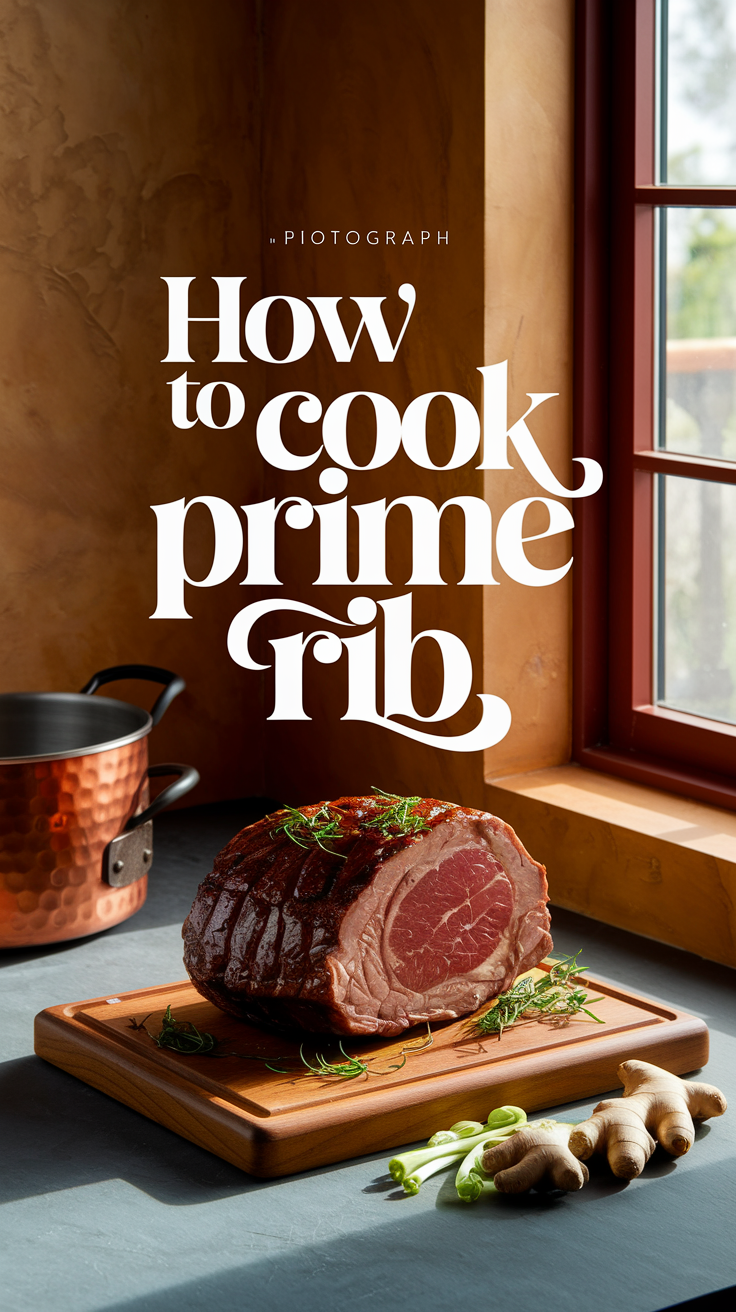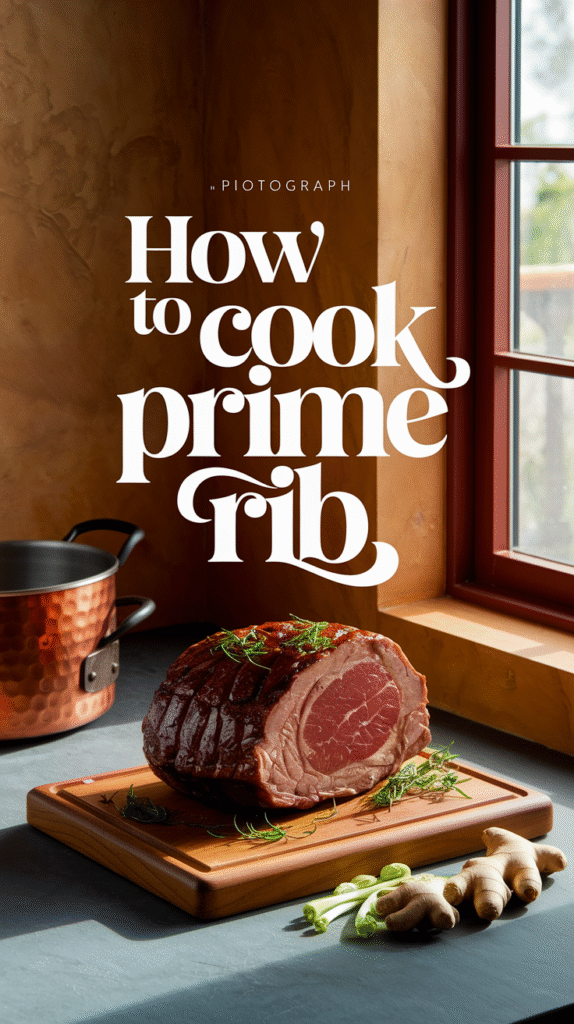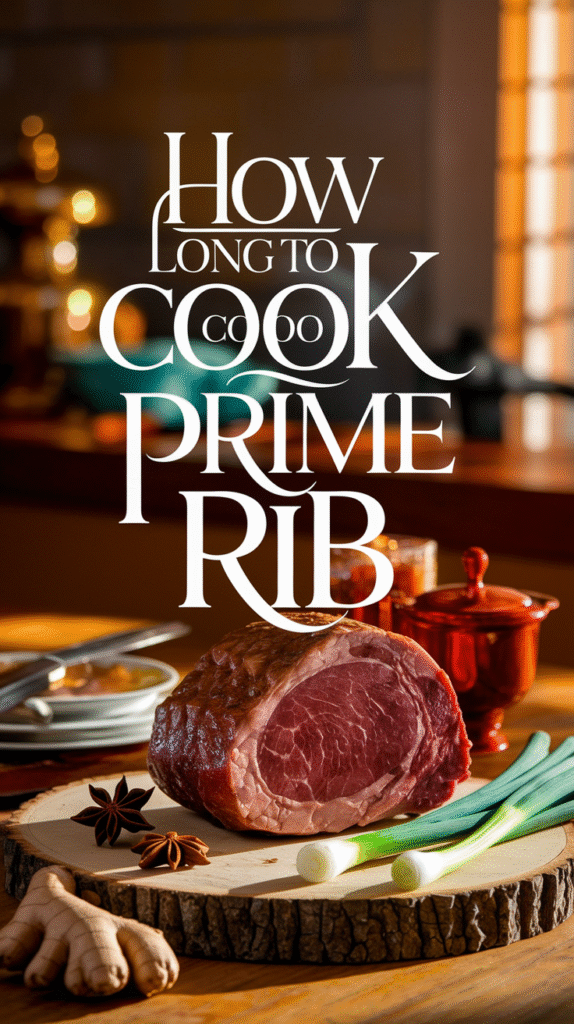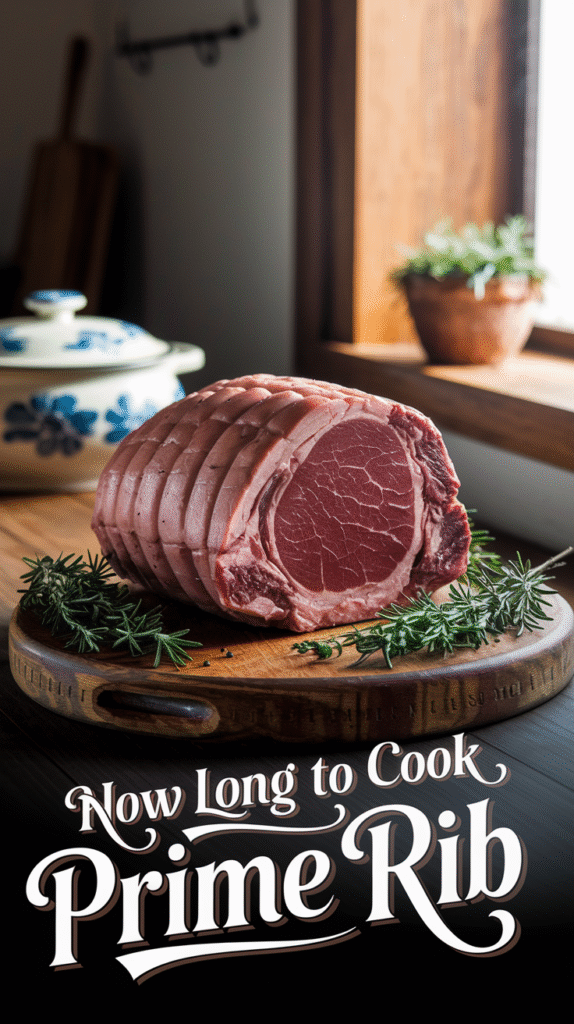Cooking prime rib can feel intimidating, especially if you’re aiming for that perfect roast that restaurants serve. However, with a bit of knowledge about timing and technique, you can master this dish at home. This guide will help you understand how long to cook prime rib, ensuring it turns out tender, juicy, and full of flavor.
Understanding Prime Rib
Before diving into cooking times, it’s essential to know what makes prime rib special. Also called standing rib roast, prime rib comes from the primal rib section of cattle. It is known for its rich marbling, which contributes to its tenderness and taste.
Factors Influencing Cooking Time
Several factors will affect how long you should cook your prime rib, including:
- Weight: The heftier the roast, the longer it will need to cook.
- Desired doneness: Different levels of doneness (rare, medium-rare, medium, etc.) require varying cooking times.
- Oven type: Conventional ovens may cook differently than convection ovens.
- Starting temperature: A roast brought to room temperature cooks more evenly.
Cooking Times by Weight
Generally speaking, the following cooking times are recommended for a bone-in prime rib roast:
| Weight of Roast (lbs) | Rare (125°F) | Medium-Rare (135°F) | Medium (145°F) | Medium-Well (150°F) |
|---|---|---|---|---|
| 4-5 lbs | 1.5 – 2 hours | 2 – 2.5 hours | 2.5 – 3 hours | 3 – 3.5 hours |
| 6-7 lbs | 2 – 2.5 hours | 2.5 – 3 hours | 3 – 3.5 hours | 3.5 – 4 hours |
| 8-9 lbs | 2.5 – 3 hours | 3 – 3.5 hours | 3.5 – 4 hours | 4 – 4.5 hours |
Cooking Techniques
To achieve the best results, here’s a method you can follow:
- Preparation: Start by letting your prime rib sit at room temperature for about 2 hours before cooking. This step ensures even cooking.
- Seasoning: Generously season your roast with salt and pepper, and consider adding garlic and herbs for extra flavor.
- Searing: For a beautiful crust, sear the roast in a hot skillet or oven at 450°F for the first 15-20 minutes.
- Slow Roasting: Reduce the temperature to 325°F and continue cooking based on weight and desired doneness.
- Resting: After removing it from the oven, let your prime rib rest for at least 20-30 minutes. This allows juices to redistribute, making for a juicier cut.
Using a Meat Thermometer
Investing in a good meat thermometer can take the guesswork out of cooking. Insert it into the thickest part of the meat without touching bone. This method will help you achieve the perfect doneness:
- Rare: 125°F
- Medium-Rare: 135°F
- Medium: 145°F
- Medium-Well: 150°F
Final Touches
Slice against the grain for tender pieces, and consider serving with au jus or a horseradish sauce for added flavor. Want to learn more? Check out the Kitchn for additional tips on preparing prime rib.
By following these guidelines and adjusting for your specific roast, you’ll avoid the common pitfalls of overcooking or undercooking prime rib. Whether you’re preparing a holiday feast or a special family dinner, knowing how long to cook your prime rib can help you impress your guests with a mouthwatering meal.
For more detailed cooking methods and recipes, visit Serious Eats.
The Best Cooking Methods for Prime Rib
Cooking prime rib can be a delightful experience, and choosing the right method can elevate your meal to new heights. There are several cooking techniques you can use, each bringing out unique flavors and textures. Let’s explore the best cooking methods for preparing prime rib, ensuring you get the tender, juicy results you desire.
Oven Roasting
Oven roasting is a classic method that many chefs prefer for prime rib. This technique allows for an even cook and a beautiful crust on the meat. To roast prime rib in the oven, follow these steps:
- Preheat your oven to 450°F (232°C).
- Season the meat generously with salt, pepper, and other herbs or spices.
- Place the prime rib on a rack in a roasting pan, fat side up.
- Roast for about 20 minutes to create a sear.
- Reduce the oven temperature to 325°F (163°C) and continue cooking for another 1.5 to 2 hours, or until it reaches your desired internal temperature.
Using a meat thermometer is crucial. Aim for 130°F (54°C) for medium-rare, 140°F (60°C) for medium. Let the prime rib rest for at least 20 minutes before carving.
Reverse Searing
Reverse searing is a modern technique that yields a perfectly cooked piece of meat with a delectable crust. Here is how to do it:
- Start by seasoning your prime rib.
- Cook it in a low-temperature oven (around 225°F or 107°C) for several hours until it reaches an internal temperature of about 120°F (49°C).
- Remove the prime rib from the oven and let it rest.
- In the final stage, sear the meat in a hot skillet or on a grill for about 5-10 minutes per side to develop a golden crust.
This method allows for greater control over your cooking, making it less likely that you’ll overcook your prime rib.
Slow Cooking
If you have the time and prefer a hands-off approach, consider slow cooking. This method is perfect for busy individuals who want to enjoy a flavorful prime rib without constant monitoring:
- Season your prime rib and place it in a slow cooker.
- Add beef broth and any desired herbs.
- Set the slow cooker on low and allow it to cook for 6-8 hours.
The slow cooking process breaks down the fibers in the meat, resulting in a tender and juicy roast. Be sure to check the internal temperature to avoid overcooking.
Sous Vide Cooking
Sous vide is a modern cooking technique that involves vacuum-sealing meat and cooking it in a water bath at a precise temperature. Here’s how to cook prime rib sous vide:
- Season the prime rib and vacuum-seal it.
- Prepare a water bath and set the temperature to your preferred doneness (typically around 130°F for medium-rare).
- Cook for 6-10 hours.
- Finish by quickly searing the meat in a hot skillet.
This method ensures your prime rib is cooked evenly and retains its juices.
Grilling
Grilling prime rib can add a smoky flavor that is hard to resist. To grill, follow these steps:
- Season your prime rib and let it come to room temperature.
- Preheat your grill to a high temperature.
- Sear the meat on all sides for about 10-15 minutes.
- Move it to a cooler part of the grill and cover, cooking until it reaches desired doneness.
This technique not only provides a lovely crust but also infuses the meat with a smoky aroma.
Each method offers a distinct way to prepare prime rib. Depending on your time, preferences, and available equipment, you can choose the technique that best suits you. If you’re looking for more in-depth tips and recipes, visit Serious Eats or Food Network for additional resources.
Understanding Prime Rib Cuts and Their Characteristics
Understanding the different cuts of prime rib is essential for meat lovers and home chefs alike. Prime rib is a flavorful and tender cut of beef that is perfect for special occasions. Knowing the characteristics of each cut can help you make better cooking decisions and delight your family and guests.
What is Prime Rib?
Prime rib, also known as standing rib roast, comes from the primal rib section of beef. It contains ribs six through twelve and is known for its rich flavor and tenderness, making it a favorite for holiday dinners and celebrations. Prime rib can be sold as whole roasts or cut into individual steaks, allowing versatility in cooking methods.
Different Cuts of Prime Rib
When it comes to prime rib, several cuts are available, each with unique characteristics. Here are the primary cuts:
- Ribeye: The ribeye steak is a boneless cut that provides a rich, beefy flavor. It’s known for its marbling, which contributes to its juiciness and tenderness.
- Bone-in Rib Roast: This cut includes several ribs and is often presented with the bone. The bone helps retain moisture and adds flavor during cooking. It’s perfect for roasting.
- Chuck Eye Roast: Often referred to as the “poor man’s ribeye,” the chuck eye roast is cut from the shoulder area. While less tender than other cuts, it offers excellent flavor at a more affordable price.
- Prime Rib Cap: This is the cap of the rib roast, known for its deep flavors and tenderness. It is highly sought after by chefs for its exceptional taste and texture.
- Back Ribs: These ribs are cut from the rib area but are less meaty than other cuts. They are great for slow cooking or barbecuing.
Quality Grades of Prime Rib
When purchasing prime rib, you may encounter different quality grades. Here are the main grades you should be aware of:
| Grade | Description |
|---|---|
| Prime | Highest quality with abundant marbling. It’s exceptionally tender, juicy, and flavorful. |
| Choice | High quality, slightly less marbling than prime. Still very tender and flavorful. |
| Select | Good quality but with less marbling. May be less tender and flavorful compared to prime or choice. |
Cooking Methods for Prime Rib
How you choose to cook your prime rib will depend on the cut and your personal preference. Popular methods include:
- Roasting: The most traditional method for cooking prime rib. Searing the meat at high heat and then roasting it gives a beautiful crust while keeping the inside tender.
- Grilling: Ideal for ribeye steaks. Grilling imparts a smoky flavor and allows for a delicious char.
- Slow Cooking: This method is perfect for tougher cuts like chuck eye roast, turning the meat tender and flavorful through low, slow heat.
Serving Prime Rib
When serving prime rib, slice it against the grain to ensure tenderness. Pair with sides like creamy mashed potatoes, roasted vegetables, or a robust gravy. For an elegant touch, consider serving with a horseradish sauce or a red wine reduction.
Additional Tips
Your experience with prime rib can greatly improve with a few simple tips:
- Allow your prime rib to come to room temperature before cooking. This ensures even cooking.
- Invest in a good meat thermometer to guarantee medium-rare perfection, typically 130-135°F.
- Let the meat rest for at least 15-20 minutes after cooking. This allows the juices to redistribute, enhancing flavor and tenderness.
For more detailed information on prime rib and cooking techniques, you can follow the links to Food Network or Serious Eats. Understanding the cuts and characteristics of prime rib will help you enjoy this delicious treat to its fullest!
Perfecting the Seasoning for Your Prime Rib
When cooking a prime rib, the seasoning is almost as important as the cooking technique itself. A beautifully seasoned prime rib can elevate the flavor and provide a memorable experience for everyone at the table. Getting the seasoning just right can transform a simple meal into a spectacular feast. Here are some essential tips to perfect the seasoning for your prime rib.
Understanding Your Seasoning Base
To begin, it’s crucial to know what flavors pair best with prime rib. The rich taste of beef lends itself to robust seasonings. Here are some components to consider:
- Salt: Often called the universal seasoning, salt not only enhances flavors but also helps in tenderizing meat. Opt for kosher salt or sea salt for better texture.
- Pepper: Freshly ground black pepper adds a punch. Aim for a coarse grind to create a nice crust.
- Herbs: Fresh herbs such as rosemary and thyme pair beautifully with prime rib. They add an aromatic quality that complements the meat.
- Garlic: Roasted or fresh, garlic infuses a wonderful depth. Use it generously but be mindful not to overpower the natural beef flavor.
- Other spices and blends: Consider adding spices like paprika, onion powder, or a steak seasoning blend for extra flavor.
The Perfect Seasoning Mix
To achieve a balanced seasoning, you’ll want to make a dry rub. Here’s a simple recipe for a delightful prime rib seasoning mix:
| Ingredient | Amount |
|---|---|
| Kosher salt | 2 tablespoons |
| Black pepper | 1 tablespoon |
| Fresh rosemary, chopped | 1 tablespoon |
| Fresh thyme, chopped | 1 tablespoon |
| Garlic powder | 1 teaspoon |
| Paprika | 1 teaspoon |
Mix all of these ingredients thoroughly and store in an airtight container if you have leftovers. This rub not only enhances flavor but also creates a beautiful crust during cooking.
Applying the Seasoning
Once your prime rib is trimmed and ready for cooking, it’s time to apply the seasoning. Follow these steps for optimal results:
- Dry the Meat: Pat the prime rib dry with paper towels. This helps the seasoning stick better and promotes a nice sear.
- Generous Application: Apply your dry rub liberally on all sides of the meat. Don’t forget the ends! This ensures every bite is bursting with flavor.
- Resting Time: After seasoning, let the prime rib rest at room temperature for about an hour before cooking. This allows the seasoning to penetrate the meat.
Alternative Seasoning Methods
If you’re looking to switch things up from the classic dry rub, consider these seasoning methods:
- Marinades: A marinade with ingredients like soy sauce, Worcestershire sauce, and mustard can tenderize and flavor the meat.
- Herb Butter: Mix softened butter with herbs and garlic, then massage it over the prime rib for a rich flavor.
Storing and Adjusting the Seasoning
If you’re planning to prepare your seasoning in advance, keep it in a cool, dry place to maintain freshness. Taste your seasoning mix before applying it to ensure it’s balanced. Feel free to adjust the amounts of herbs and spices according to your preference.
For more tips on cooking prime rib, you can visit Serious Eats or check out The Kitchn.
With these tips on perfecting the seasoning for your prime rib, you’ll not only impress your guests but ensure that each bite is a flavor-packed experience. Happy cooking!
Serving Suggestions and Side Dishes for Prime Rib
When it comes to prime rib, the star of the show deserves side dishes that complement its rich, savory flavor. Here are some excellent suggestions for serving your prime rib with panache, enhancing not just the taste but also the dining experience.
First, consider classic sides that have stood the test of time. These are crowd-pleasers that pair wonderfully with prime rib:
- Garlic Mashed Potatoes: Creamy and buttery garlic mashed potatoes are perfect for soaking up the delicious juices from your roast.
- Yorkshire Pudding: These light, airy pastries are traditionally served with prime rib. Their texture makes them an ideal vehicle for gravy.
- Roasted Vegetables: A medley of seasonal vegetables, such as carrots, asparagus, and Brussels sprouts, roasted to caramelized perfection is a healthy and colorful addition.
- Green Beans Almondine: Sautéed green beans topped with toasted almonds add a nice crunch and elevated flavor.
- Horseradish Cream Sauce: A dollop of zesty horseradish cream sauce alongside your prime rib can cut through the richness and add a delightful kick.
Next, let’s explore some delightful salads. Fresh salads can balance the heaviness of prime rib:
- Garden Salad: A simple mix of greens, tomatoes, cucumbers, and a light vinaigrette can refresh your palate.
- Caesar Salad: The crisp romaine tossed with creamy Caesar dressing, croutons, and Parmesan cheese offers a robust flavor that complements the meat well.
- Caprese Salad: For a light, fresh option, combine ripe tomatoes, fresh mozzarella, basil, and a drizzle of balsamic glaze.
When you think about starches to serve with prime rib, consider options that can add texture and rich flavors:
- Scalloped Potatoes: Creamy, cheesy scalloped potatoes are a decadent choice that adds depth when served alongside prime rib.
- Risotto: A creamy risotto, flavored with herbs or cheese, provides a luxurious bite and pairs beautifully with the meat.
- Wild Rice Pilaf: This nutty and hearty dish adds a lovely contrast to the tender prime rib.
Don’t forget about sauces! A variety of sauces can enhance your prime rib:
- Red Wine Reduction: A smooth red wine sauce is a classic choice that brings a touch of sophistication.
- A1 Steak Sauce: For those who enjoy store-bought options, A1 can add a tangy, robust flavor that many ascribe to steak.
For something a bit different, why not try a themed meal? Think about international flavors that can bring an exciting twist:
- French Bistronomy: Serve your prime rib with ratatouille, frites (French fries), and a glass of Beaujolais wine.
- Italian Feast: Pair with roasted garlic bread, a caprese salad, and a rich Chianti.
Now let’s discuss how to create the perfect plate presentation. Remember that presentation can elevate your dining experience:
- Place the prime rib in the center of the plate.
- Artfully arrange the sides around it.
- Add a sprig of fresh herb like rosemary or thyme for that elegant touch.
For dessert, consider something light to counter the richness of the main course:
- Lemon Sorbet: Cleansing and refreshing, it’s the perfect palate cleanser after a hearty meal.
- Chocolate Mousse: For chocolate lovers, a rich, airy mousse can round off the meal on a sweet note.
With all these sides and serving suggestions, your prime rib dinner is sure to be memorable. For additional ideas and recipes on prime rib and side dishes, visit Food Network or check out Simply Recipes for cooking tips that could enhance your meal prep.
Conclusion
Cooking the perfect prime rib involves more than just knowing how long to cook it. Understanding the different cuts of prime rib helps you choose the right one for your occasion, ensuring a flavorful and tender result. Whether you opt for the classic roasting method, sous vide, or reverse searing, each technique offers a unique approach to achieving that melt-in-your-mouth texture that everyone loves.
Seasoning plays a vital role in enhancing the natural flavors of the meat. A well-crafted blend of spices and herbs can elevate your prime rib experience from ordinary to extraordinary. Don’t shy away from experimenting with flavors that complement the beef, such as garlic, rosemary, and thyme.
When it comes time to serve, pairing your prime rib with the right sides can elevate the entire meal. Consider classic accompaniments like creamy horseradish sauce, roasted vegetables, or fluffy mashed potatoes to balance the rich flavors of the meat.
Your journey to perfect prime rib begins long before it hits the oven or grill. By understanding the nuances of cooking time based on the cut and desired doneness, you set yourself up for success. Keep in mind that resting the meat after cooking is crucial, allowing the juices to redistribute for a juicy, tender slice every time. Now that you have the tools and knowledge in hand, it’s time to create a memorable meal that will leave your guests raving about your culinary skills. Embrace the art of cooking prime rib, and enjoy the delicious rewards it brings to your table.







Leave a Reply